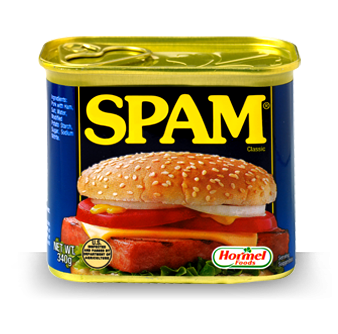 Allowing visitors to submit comments on your website encourages stronger engagement while creating fresh new content in the process. Search engines will notice this content and take it into account when ranking your site, potentially boosting your site’s ranking in the search engine results page (SERPS).
Allowing visitors to submit comments on your website encourages stronger engagement while creating fresh new content in the process. Search engines will notice this content and take it into account when ranking your site, potentially boosting your site’s ranking in the search engine results page (SERPS).
But there’s a dark side to enabling visitor commenting: the potential for spam. If you’ve ever owned or managed a website with commenting enabled, you’re probably well aware of just how much spam they attract. It seems like spammers are able to target new sites before they are even indexed into the search engines, forcing webmasters to weed through hundreds or even thousands of spam comments.
What Is Comment Spam?
Spam comments are irrelevant comments sent from automated programs and software for the purpose of gaining traffic and attracting search engine visibility.
It’s usually fairly easy to distinguish between a genuine and spam comment, as the spam comment will be riddled with links and contain little-to-no information pertaining to the page’s actual content.
Spam comments typically possess one or more of the following characteristics:
- “Name” field contains a keyword rather than an actual name.
- Comment is irrelevant to the article or post.
- Keywords are stuffed in the comment.
- Contains one or more external links.
Google acknowledged the problem of comment spam in the Quality Guidelines section of their website, saying the following:
“Comments are a great way for webmasters to build community and readership. Unfortunately, they’re often abused by spammers and nogoodniks, many of whom use scripts or other software to generate and post spam. If you’ve ever received a comment that looked like an advertisement or a random link to an unrelated site, then you’ve encountered comment spam.”
Moderate All New Comments
One all-too-common mistakes webmasters and bloggers make is enable auto-publishing of visitor comments. When this feature is enabled, all new comments – spam and authentic – are automatically published to the site when submitted. Unfortunately, most comments submitted to your site will probably be spam, so it’s recommended that you disable this feature.
Most of the leading content management systems (CMS) with built-in visitor commenting have an option for enabling and disabling auto-publishing. WordPress users can disable this feature by accessing Settings > Discussion > and checking the box next to “Comment must be manually approved.”
Disable Commenting on Older Article
Disabling visitor commenting on older articles and blog posts can also deter spam. Spammers often target older posts are articles for two reasons:
- Older posts may contain keywords relevant to the spammer’s interest.
- Older posts are less likely to be moderated.
This is a feature that’s usually found in the admin portal of the CMS. Here, you can typically set comments to close after a specified period (e.g. 14 days).
Make Comment Links Nofollow
Nofollow is an HTML link attribute used to discourage search engines from passing “value” to the linked website. In order words, it’s a way to tell search engines that they shouldn’t improve the website’s ranking due of the link.
Here’s an example of a nofollow link: <a href=”http://www.example.com/” rel=”nofollow”>Link text</a>.
Forums, message boards, and other community-driven websites are often set up to automatically add the nofollow attribute on all visitor comments, simply because the webmaster can not verify the relevance of each and every link posted by a visitor.
Ensuring visitor comments are given the nofollow attribute will deter spam and dampen their impact. Spammers often seek out websites and blogs without the nofollow attribute in commenting because it yield more SEO value. By using the nofollow, you’ll send these spammers away from your site.
Set Up an Anti-Spam Plugin
There are dozens of anti-spam plugins available for WordPress, some of which are paid and others are free. Akismet is the most popular plugin, as it’s actually packaged with the WordPress install. It automatically identifies and blocks spam by monitoring blogs, forums and websites to find “tracks” spammers leave behind. It then places these tracks into a database and cross-checks them against any new comments submitted to your website
According to Akismet.com, the plugin has stopped over 126 billion spam comments and trackbacks, which is pretty impressive. It’s important to note, however, that Akismet is only free for personal use. If your website sells a product, service, or generates revenue through other means, you must purchase either the Business plan (1 site for $5/month) or the Enterprise plan (unlimited sites for $50/month).
No anti-spam plugin is perfect, and chances are it will flag will flag some authentic comments on occasion, but the time and energy these plugins save makes it well worth it in the long run. Just remember to keep your plugins updated by downloading and installing any new versions soon after they are released.

